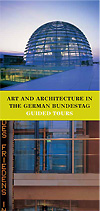Navigationspfad: Homepage > Art and History > Art > Artists
Otto Freundlich
Born in the town of Stolp, Pomerania, in 1878 and was killed at Majdanek concentration camp near Lublin, Poland, in 1943.
Freundlich originally intended his Architectural Sculpture of 1934-35 to be enlarged to a height of 20 or 30 metres. Although consisting of abstract geometrical elements, the piece hints at actual objects, including a column, a helmet, a torso and an archaic throne. A number of forms, some rounded, some angular, appear in front of a large tapering column. The firm, compact shape of the column conveys a feeling of repose, while the smaller sculpture in front opens up towards the viewer in a series of contrasts of light and shade expressive of agitation.
Freundlich, active as both a painter and a sculptor, was a pioneer of abstract art who achieved a notably personal idiom in his sculpture. His political and artistic sympathies brought him into conflict with the National Socialist regime: his 1912 sculpture The New Human Being appeared on the cover of the booklet published to accompany the ‘Degenerate Art’ exhibition of 1937 and he was eventually among the many murdered at Majdanek concentration camp.
Freundlich’s fate and the fact that his qualities as a human being and an artist are still insufficiently recognised may be regarded as representative for the sufferings of the Jews and many avant garde artists during the Third Reich.


